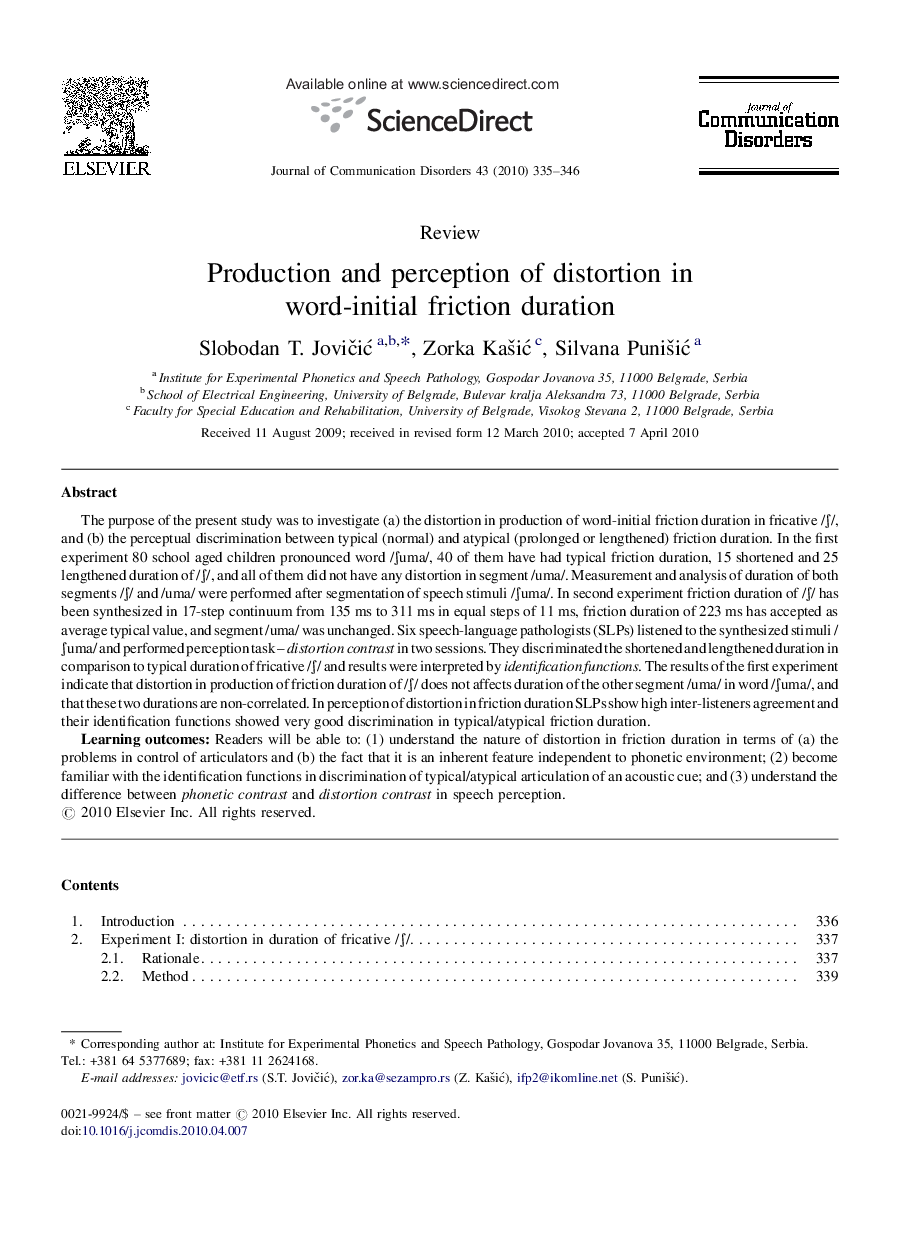| Article ID | Journal | Published Year | Pages | File Type |
|---|---|---|---|---|
| 910978 | Journal of Communication Disorders | 2010 | 12 Pages |
The purpose of the present study was to investigate (a) the distortion in production of word-initial friction duration in fricative /ʃ/, and (b) the perceptual discrimination between typical (normal) and atypical (prolonged or lengthened) friction duration. In the first experiment 80 school aged children pronounced word /ʃuma/, 40 of them have had typical friction duration, 15 shortened and 25 lengthened duration of /ʃ/, and all of them did not have any distortion in segment /uma/. Measurement and analysis of duration of both segments /ʃ/ and /uma/ were performed after segmentation of speech stimuli /ʃuma/. In second experiment friction duration of /ʃ/ has been synthesized in 17-step continuum from 135 ms to 311 ms in equal steps of 11 ms, friction duration of 223 ms has accepted as average typical value, and segment /uma/ was unchanged. Six speech-language pathologists (SLPs) listened to the synthesized stimuli /ʃuma/ and performed perception task – distortion contrast in two sessions. They discriminated the shortened and lengthened duration in comparison to typical duration of fricative /ʃ/ and results were interpreted by identification functions. The results of the first experiment indicate that distortion in production of friction duration of /ʃ/ does not affects duration of the other segment /uma/ in word /ʃuma/, and that these two durations are non-correlated. In perception of distortion in friction duration SLPs show high inter-listeners agreement and their identification functions showed very good discrimination in typical/atypical friction duration.Learning outcomes: Readers will be able to: (1) understand the nature of distortion in friction duration in terms of (a) the problems in control of articulators and (b) the fact that it is an inherent feature independent to phonetic environment; (2) become familiar with the identification functions in discrimination of typical/atypical articulation of an acoustic cue; and (3) understand the difference between phonetic contrast and distortion contrast in speech perception.
